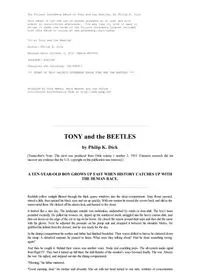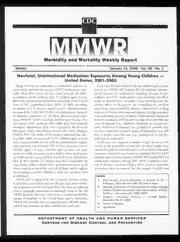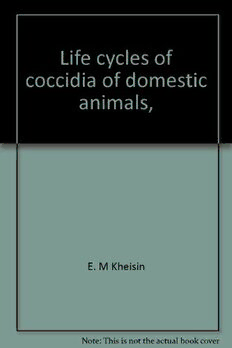
Life Cycles of Coccidia of Domestic Animals PDF
Preview Life Cycles of Coccidia of Domestic Animals
Life Cycles of Coccidia of Domestic Animals By Yevgeniy M. Kheysin Edited by Kenneth S. Todd, Jr. Translated by Frederick K. Pious, Jr. William Heinemann Medical Books Limited LONDON Distributed in the United Kingdom and traditional Commonwealth countries (except Canada) by WILLIAM HEINEMANN MEDICAL BOOKS LIMITED 23 Bedford Square, London WC1B 3HT, England Library of Congress Catalog Card No. 71 -156229 University Park Press ISBN 0-8391-0066-3 Heinemann ISBN 0433-18400-0 Copyright c1972 by University Park Press Baltimore, Maryland, U.S.A. All rights reserved Printed in the United States of America All rights, including that of translation into other languages, reserved. Photomechanical reproduction (photocopy, microcopy) of this book or parts thereof without special permission of the publisher is prohibited. Library of Congress Cataloging in Publication Data Kheïsin, Evgenii Mineevich. Life cycles of coccidia of domestic animals. Translation of Zhiznennye tsikly kokfsidii domashnikh zhivotnykh. Bibliography: p. 1. Coccidia. 2. Veterinary parasitology. I. Title. QL368.C7K4813 593M9 71-156229 ISBN 0-8391-0066-3 EDITOR'S PREFACE The Coccidia have been the subject of many studies and reports, but no recent book is available that is concerned primarily with their basic biology and life cycles. Zhiznennye Tsikly Koktsidii Domashnikh Zhivo- thykh was published in Russian in 1967. The author, Dr. Yevgeniy Minevich Kheysin, was eminently qualified to write such a book. Much of the literature which he discussed was published in Russian and was assimilated with the non-Russian literature for the first time. Dr. Khey- sin spelled his name Cheissin when he published in non-Russian jour- nals; his name is listed as Kheisin in the Index Catalogue of Medical and Veterinary Zoology. About one year after the book was published, Dr. Kheysin died of a heart attack in Leningrad. At the time of his death he was the Director of the Microscopy Laboratory of the Institute of Cytology of the USSR Academy of Sciences at Leningrad and Professor of Invertebrate Zool- ogy at Leningrad University. The following information was taken from a biography honoring Professor Kheysin on his 60th birthday by Yu. I. Polyanskiy (Tsitologiya 9:1436-1437, 1967). The biography was translated by Vir- ginia Ivens. Dr. Kheysin graduated from Leningrad University in 1930, and was a student of Valentin A. Dogel'. His first publications were concerned with the taxonomy and morphology of astomatid ciliates from oligochaetes. Some of his earlier investigations were on the parasitic amoebae of man. He was also interested in the piroplasmids and ciliates. He is probably best known for his work with coccidia. His doctoral dissertation described the life cycles and cytology of several species of coccidia, and he was the first Soviet scientist to use the electron micro- scope to study protozoa. His research was not limited to protozoa. He studied the permeability of parasitic helminth eggs, and he and a number of students and co- workers investigated the distribution and ecology of ixodid ticks in the territory of Karel. Dr. Kheysin trained many students, and for several years he taught several zoology courses at the Pedagogical Institute in Leningrad. He was head of the Department of Zoology at Petrozabodshi University for six years. vii viii Editor's Preface He was well known outside of the USSR, and he and Yu. I. Polyan- skiy revised Dogel's books on general parasitology and general proto- zoology. Both of these were later translated into English. He partici- pated in the 14th Zoological Congress in London and the 15th Zoologi- cal Congress in Washington. He also took part in the International Protozoology Conferences in Prague and London, and in other interna- tional conferences. At the time of his death he was the vice-president of the Third International Congress of Protozoology which was held in Leningrad in August, 1969. The coccidia have been of interest since the first species was described in 1870. They are important disease agents in many domestic animals, and large amounts of time and money have been spent to find methods for controlling them. The best method still seems to be good sanitation. An understanding of the fundamental ecology of this group is needed, and it is hoped that this book will provide much information and make it unnecessary to read the voluminous literature on the coccidia, much of which is published in languages other than English. Mr. Pious translated the book and I have edited it. The opinions are those of Dr. Kheysin and not of Mr. Pious or me. The transliteration system for Russian names and words used is that of the United States Board on Geographic Names. The bibliography includes the references listed by Dr. Kheysin; however, I have corrected some of the citations by referring to the original articles that are available in the University of Illinois Library. The rest were verified by using the Index Catalogue of Medical and Veterinary Zoology. The bibliography contains many references that were not cited in the Russian text. There are errors in some of the citations; these were in the original, and I did not attempt to verify that the correct papers were cited by Dr. Kheysin. The Russian edition contained 18 halftone plates, but these are not included in this book because of the poor quality of plates that are reproduced from halftones. Several of the line drawings in Kheysin's book were adapted from figures by other authors. For some of these I have copied figures from the original publications, and they are not the same as those in the original Russian book. The translation of this book was supported by Research Grant CC00037 from the Communicable Disease Center, United States Public Health Service, and preparation of the manuscript was supported in part by a grant from the Stauffer Chemical Company and by Grant LM00798 from the National Library of Medicine. Publication of this book was made possible by the assistance of sev- eral people. John V. Ernst, Datus M. Hammond, and Norman D. Levine Editor's Preface ix reviewed the manuscript. The manuscript was typed by Margaret McWhorter and others of the stenographic staff of the College of Veter- inary Medicine, at the University of Illinois in Urbana. I am especially indebted to my colleague Virginia Ivens for translation and interpreta- tion of obscure parts of the text. Jack E. Snow assisted in proofreading the manuscript and in verifying the bibliography. KENNETH S. TODD, JR. College of Veterinary Medicine Urb ana, Illinois AUTHOR'S PREFACE Because the group includes many parasites which cause serious diseases in man and domestic animals, representatives of the subclass Coccidi- omorpha have long attracted the attention of researchers. It is sufficient to mention malaria and coccidiosis in order to emphasize the practical importance of this group of protozoa. Many studies have been devoted to coccidiosis of domestic and wild animals, and many hundreds of different coccidian species have been described from vertebrates and invertebrates. During the last three decades many protozoology and parasitology texts have described coc- cidia and coccidiosis of domestic animals. In these texts considerable attention is given to the structure of the exogenous stages of develop- ment, pathogenesis, the clinical picture, treatment, immunity, prophy- laxis, and the epizootiology and biology of the agents of coccidiosis. In the Russian literature one should point out W. L. Yakimoff's (1931) book Veterinarnaya Protozoologiya (Veterinary Protozoology) which contained a large section on coccidiosis of domestic animals. However, much of the information given in this book is outdated. N. P. Orlov (1956) published a brochure on coccidiosis of farm animals. Also, a textbook on veterinary parasitology, compiled under the editorial leadership of Professor V. S. Yershov, contained a small section on coccidiosis. In countries other than Russia, all the textbooks on parasitology and protozoology contain some information on coccidia and coccidiosis. Among these are books by Marotel (1949), Lapage (1956), and Borchert (1958) in which the coccidia are covered briefly along with other animal diseases. Coccidia and coccidiosis are treated in more detail in the spe- cialized manuals of veterinary protozoology by Curasson (1943), Mor- gan and Hawkins (1948), Richardson and Kendall (1957), and Levine (1961a). During the last 30 years, several monographs devoted exclusively to coccidia and coccidiosis have appeared. These include Coccidia and Coccidiosis of Domesticated Game and Laboratory Animals and oj Man by Becker (1934), as well as the recently issued books Coccidiosis by Davies, Joyner, and Kendall (1963) and Coccidia and Coccidiosis by Pellérdy (1965). A monograph by Kheysin (1947a) dealt with the coccid- ia of rabbits, and Musayev and Veysov (1965) published a book on xi xii Author's Preface coccidia of rodents. In several major texts on protozoology (Wenyon, 1926; Doflein and Reichenow, 1953; Bhatia, 1938; Grasse, 1953; Jirovec et al., 1953; Kudo, 1954; Grell, 1956; Dogel', Polyansky, and Kheysin, 1962), the biological and cytological aspects of coccidia are examined. It would seem that the coccidia have been examined from all aspects in many texts and special monographs, but information concerning the life cycles, principles of development within the host, and behavior in the external environment has not been sufficiently summarized. Most of the practical questions cannot be solved without a knowledge of the life cycles of coccidia, their morphophysiological properties, and the rela- tionships between the various stages and the external environment. For this reason I have attempted to summarize the material now published and also to make use of my own data and experience with rabbit coccid- ia life cycles. Since coccidia are parasitic unicellular organisms, the greater part of the review of their life cycles is devoted to a cytophysiol- ogical analysis of all stages of the life cycles of these protozoa. Along with this analysis, and on the basis of it, a parasitological characteriza- tion of the life cycles is given. In the following review, I shall describe not only the structure and physiology of all stages of the life cycle, but also their area of location in the body of the host, the characteristics of development and duration of the coccidian infection, the conditions necessary for the survival of the oocysts in the external environment and the effects of external factors on sporulation, and finally, the conditions determining infection of the host by coccidia. In reviewing all these subjects, I have confined myself somewhat in the selection of material by chiefly using information on the coccidia of domestic animals. This is quite natural, considering that the life cycles of coccidia of domestic animals have been studied in relatively great detail, and because domestic animals are more convenient for experi- mentation. I have also used data on coccidia of invertebrate animals which are of a particular interest for purposes of comparison, since these protozoa offer the best way of studying certain cytological details of the life cycle such as the sexual process, reduction division, sporogony, and schizogony. The last chapter of the book contains a description of all coccidia of domestic animals. The practical questions on methods of controlling coccidiosis are not included in the present work, but the reader may easily find them in the many books mentioned above. CHAPTER I The Basic Types of Life Cycles of Representatives of the Class Sporozoa First of all, it is necessary to define the characteristics of the group of parasitic protozoa to which the coccidia belong. The term "coccidia" is so undefined that one must stipulate which organisms will be referred to by that name in this book. The class Sporozoa includes the subclass Coccidiomorpha, or as it is otherwise called, the Coccidia. Thus, all representatives of this subclass may properly be called coccidia. However, in practice I have limited the use of this term somewhat. Sometimes all representatives of the order Coccidiida are referred to as coccidia. This is also proper, but with such a wide use of the term a certain misinterpretation and inconvenience arises because the order Coccidiida also includes the suborder which contains the blood sporozoa (Haemosporidiidea) which are not usually called coccidia. They are always referred to as haemosporidia. These include representatives of the genera Plasmodium, Haemoproteus, Leucocytozoon, and others. The term coccidia is better applied to the more limited group of sporozoans included in the order Coccidiida. Very often only representatives of the suborder Eimeriidea are referred to as coccidia. This suborder includes numerous representatives which cause disease in various animals and man. None of these are parasites of the blood of the host, a fact which distinguishes them from the parasites of the suborder Haemosporidiidea, which are very similar to the Eimeriidea. In the medical and veterinary literature the term coccidia is some- times applied only to representatives of the family Eimeriidae, which includes all coccidia causing disease in man and animals. This family ι 2 Life Cycles of Coccidia of Domestic Animals includes several genera and about 800 species. The disease caused by members of this family is called coccidiosis, but it would probably be more correctly called eimeriosis. Everyone has become accustomed to the former term, and practically no one uses the latter even though it is completely correct. Further descriptions of coccidia will be limited to representatives of the family Eimeriidae which are parasitic in domestic animals. This includes a rather large group of parasitic protozoa on which a special monograph could be written. The class Sporozoa is strictly parasitic and includes many intracellu- lar forms which are found in both vertebrates and invertebrates. At the present, there are about 1800 known species of this class. The following taxonomic scheme will be used in this book: Class Sporozoa Leuckart, 1879 Subclass Gregarinina Dufour, 1828 Order Eugregarinida Léger, 1900 Order Schizogregarinida Léger, 1910 Subclass Coccidiomorpha Doflein, 1901 Order Protococcidiida Cheissin, 1956 Order Adeleida Léger, 1911 Family Adeleidae Léger, 1911 Family Haemogregarinidae Wenyon, 1926 Order Coccidiida Labbé, 1899 Suborder Eimeriidea Léger, 1911 Family Selenococcidiidae Poche, 1913 Family Eimeriidae Poche, 1913 Family Lankesterellidae Reichenow, 1921 Family Aggregatidae Reichenow, 1921 Suborder Haemosporidiidea Danilevskij, 1885 Family Haemoproteidae Doflein, 1916 Family Plasmodiidae Mesnil, 1908 The most characteristic feature of the Sporozoa is the presence of a complex cycle of development which includes an alternation of a sexual process with various forms of asexual reproduction. In all the Sporozoa, the sexual process is completed after fertilization and formation of an encysted zygote called a zygocyst or oocyst. In the Sporozoa this stage of the life cycle is the most resistant one and also the longest lasting. The sexual process is characterized by the formation of gametes of each sex which may be structurally similar or different. In the Gregarin- Life Cycles of Class Sporozoa 3 ina, gametogenesis results in the formation of similar gametes; dissimi- lar gametes are formed in the Coccidiomorpha. In the Gregarinina the male and female gametes are formed by division of the gamont. In the Coccidiomorpha this process is found during microgametogenesis, but the macrogamete is formed by the growth of the gamont without divi- sion. When gamonts of both sexes are formed in the Gregarinina, or during microgametogenesis of the Coccidiomorpha, the gametocyte is the stage of development which produces gametes. In macrogameto- genesis this term is not applicable. In the gregarines, the gamont stage (gametocyte) is present for some time before the process of gametogene- sis begins. This stage of the gamont is often called the trophont or tro- phozoite. The gametes formed by all the Sporozoa unite to form a zygote. The isogametes, i.e., gametes which cannot be distinguished in size or shape as being of either sex, unite. In anisogamic fertilization the gametes are morphologically distinguishable, but there is little difference in size; such gametes also unite. In oogamic fertilization there is a considerable dif- ference in size of the gametes. The microgamete penetrates into the macrogamete, and a zygote is formed by the fertilized macrogamete. Isogamie, and in some cases anisogamic, fertilization is usually found in gregarines, but oogamic fertilization is characteristic of the Coccidi- omorpha. In all Sporozoa the zygote undergoes metagamic development, or sporogony, leading to the formation of sporozoites within oocysts (zygocysts). The process of sporogony takes place by either simple or multiple division. The sporozoites are the stage of development which infect the host and represent the initial stage of the next generation which reproduces by either an asexual or sexual process. Asexual reproduction is accomplished by schizogony (multiple division). The sporozoite pen- etrates a cell of a host tissue to become a uninuclear trophozoite. During the process of asexual reproduction (schizogony), the single nucleus divides repeatedly. This leads to the formation of a multinu- clear schizont. Segmentation of the latter then begins, i.e., the break- down of all the schizont protoplasm into separate formations called merozoites (the French protistologists call them schizozoites) which are equal in number to the number of nuclei formed. The merozoites are usually mononuclear. They may penetrate into the cells of the host where they form schizonts. This type of repeated asexual reproduction produces a large number of parasites within the host. Asexual reproduc- tion by schizogony sooner or later changes into a sexual process which begins the progamic period. The merozoites then develop into gamonts.
The list of books you might like

The 5 Second Rule: Transform your Life, Work, and Confidence with Everyday Courage

As Good as Dead

The Mountain Is You

The Subtle Art of Not Giving a F*ck

Quasar Lensing Statistics and Omega_Lambda: What Went Wrong?

Bedienungshandbuch

Regionale plastische und rekonstruktive Chirurgie im Kindesalter

C ANARCHISM COMMUNITARIAN OR CAPITALIST - Libertarian Papers
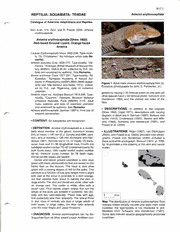
Ameiva erythrocephala

Maid of Honour A Tale of the Dark Ages Vol I

Greek Government Gazette: Part 7, 2006 no. 700
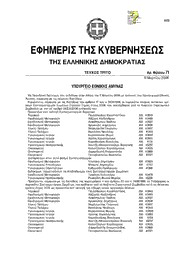
Greek Government Gazette: Part 3, 2006 no. 71

Clinical and Experimental Immunology 1993: Vol 94 Table of Contents
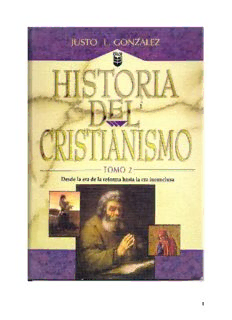
Historia Del Cristianismo Tomo 2 (Historia del Cristianismo - History Of Christianity)
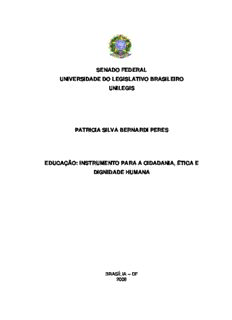
Cabe ao Estado instruir os indivíduos quanto aos

MOHELA Annual Report 2008
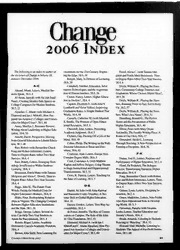
Change 2006: Vol 38 Index & Table of Contents
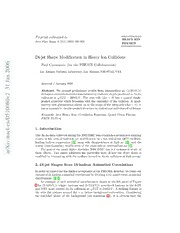
Di-jet Shape Modification in Heavy Ion Collisions

Call Auction Trading: New Answers to Old Questions

Report of the Federal Government on research 1993 : abridged version

NASA Technical Reports Server (NTRS) 19930015490: The systems engineering overview and process (from the Systems Engineering Management Guide, 1990)
